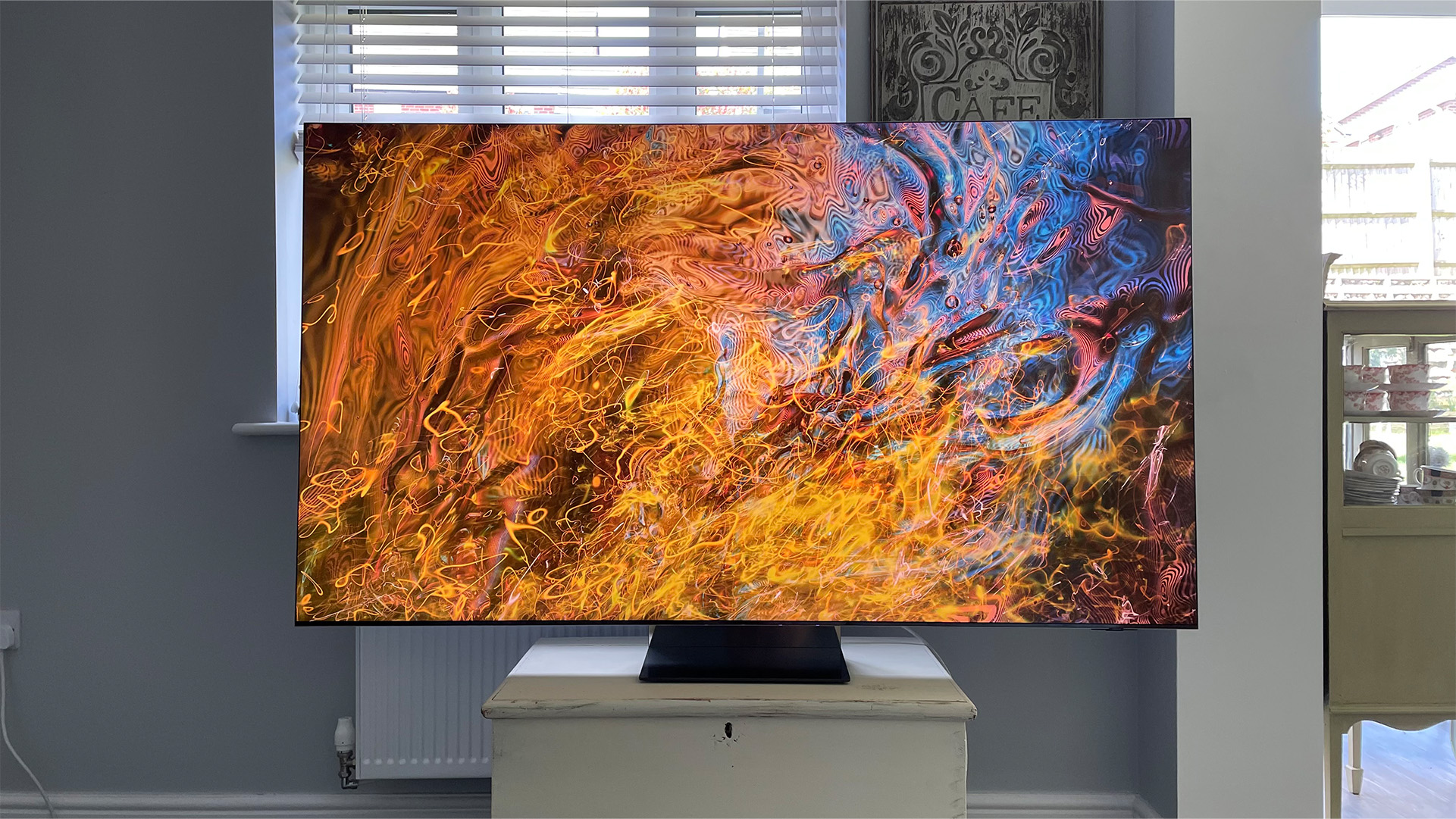
After its 8K TVs faced a tricky 2023 (at least in some part thanks to new EU TV power consumption rules), Samsung has come back swinging for 2024. Its new flagship 75-inch TV, the QN900D, finds the brand pulling out all the stops to improve picture quality, design and, yes, power consumption to ensure that reports of 8K’s death end up looking very greatly exaggerated indeed.
Price
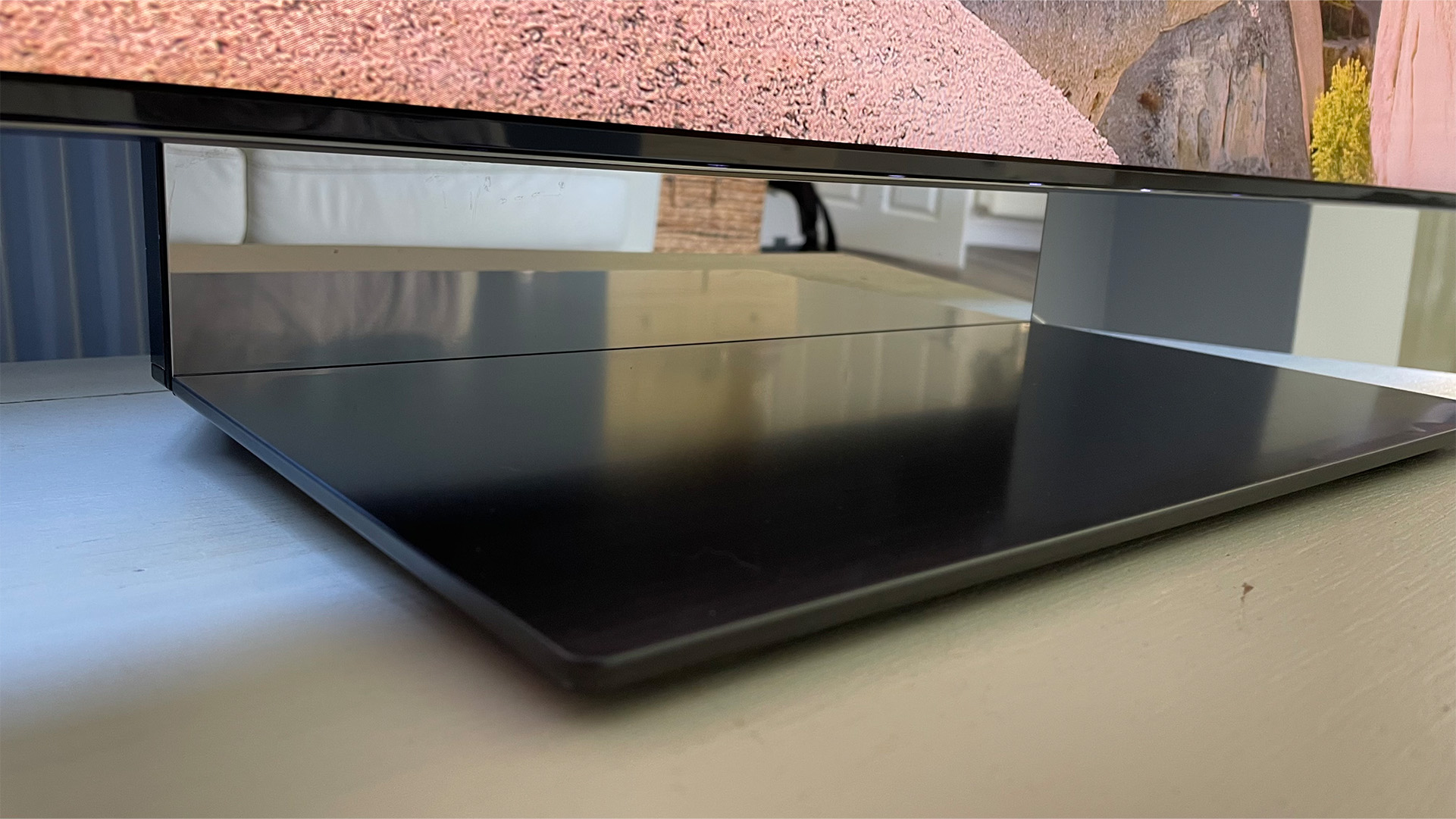
Opting for Samsung’s flagship 8K TV doesn’t come cheap. The 75-inch model on test here is known as the QE75QN900D in the UK, where Samsung suggests it will cost £6690. In the US it’s the QN75QN900D and is being sold for $6300, and in Australia, it’s the QA75QN900D and carries a recommended retail price of AU$8999. That equates to a chunk of change no matter which territory you’re buying it in.
In its defence, though, as well as delivering a four-fold increase in pixels over a 4K TV, it backs that ultra-fine resolution up with other premium picture quality features and a spectacular premium design.
Design
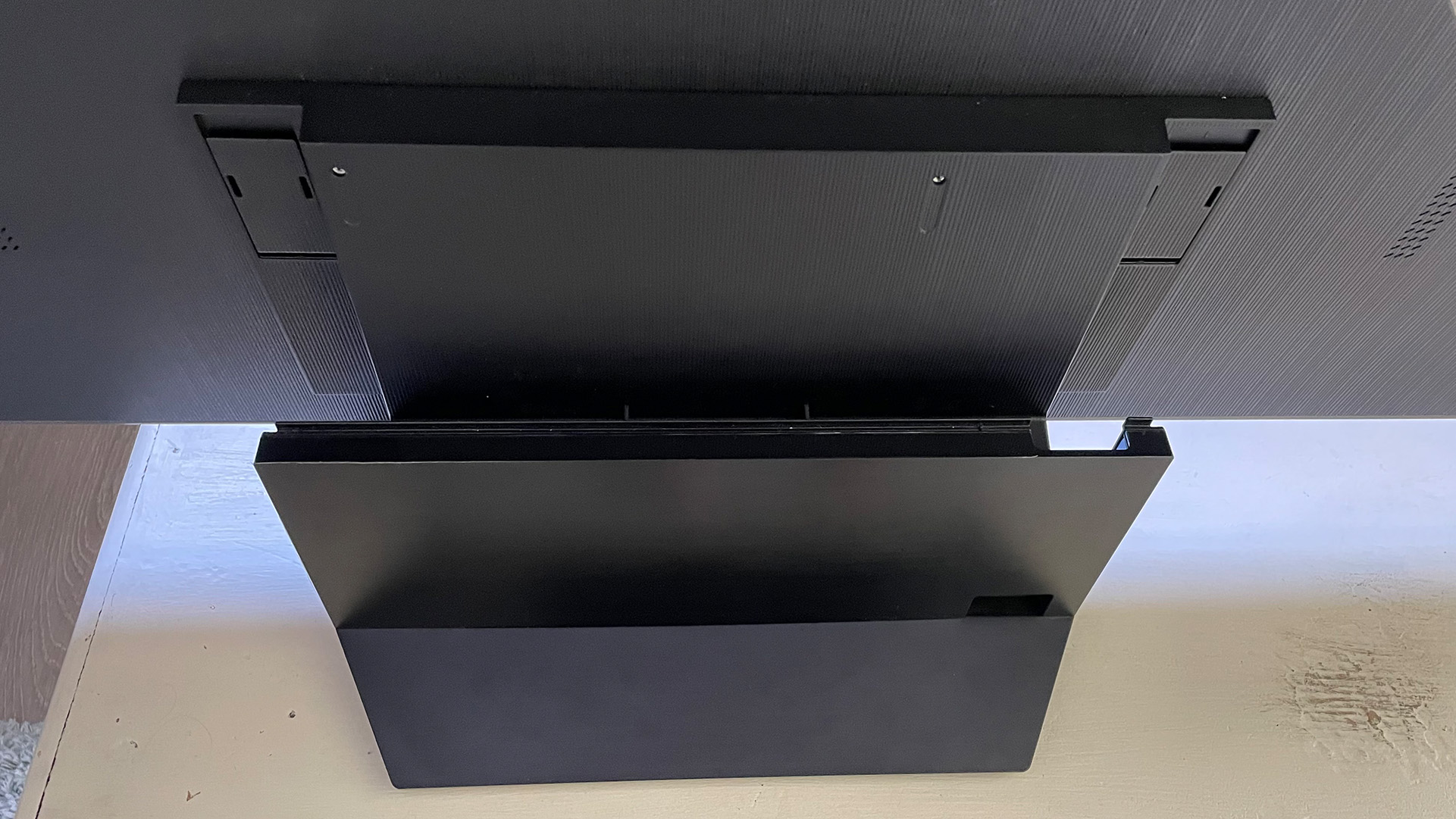
The QN900D is arguably the sleekest, most futuristic-looking LCD TV in town. For starters, as the premium example for 2024 of Samsung’s Infinity Air concept, its screen sits in a frame so narrow that for once it actually almost lives up to its ‘bezel-free’ claims.
The slenderness extends to the TV’s rear, too, which sticks out only just over a single centimetre. This incredible slimness for such a big-screen TV using LED backlighting is uniform across the entire back panel, too, creating a distinctive monolithic effect that looks particularly stunning hung on a wall.
The silver metallic trim encasing the TV’s sides delivers another gorgeous premium touch, emphasised by the perforations that puncture all four sides as part of the TV’s Object Tracking Sound system (which is designed to position effects in the correct place on the TV’s screen). This sound system also impacts the design in the shape of a roster of no less than eight circular drivers facing out of the screen’s rear.
Despite its wall-hanging affinity, the QN900D still ships with a desktop pedestal stand. This attaches under the centre of the screen so you don’t need a hugely wide piece of furniture to sit the TV on, and remarkably assembles and attaches to the TV without using any screws. The neck of the stand features an unusual, highly mirrored finish, too, which can, at least from a certain angle, make the screen look as though it is hanging in mid-air.
The QN900D can be as skinny as it is because its connections, power handling and processing are all handed over to an exterior ‘One Connect’ box that feeds everything into the screen via a single cable. This box can sit apart from the TV, connecting via a long silvery cable, or it can slot onto the QN900D’s stand behind the screen and attach to it via an also-provided short cable.
Provided with the QN900D are two remote controls. One is a button-heavy and plasticky ‘standard’ affair, while the other ‘smart’ option is button-lite, unusually slim and solar-powered. Aside from the lack of a direct input selection button on the stripped-back remote, both remotes are easy to use.
Features
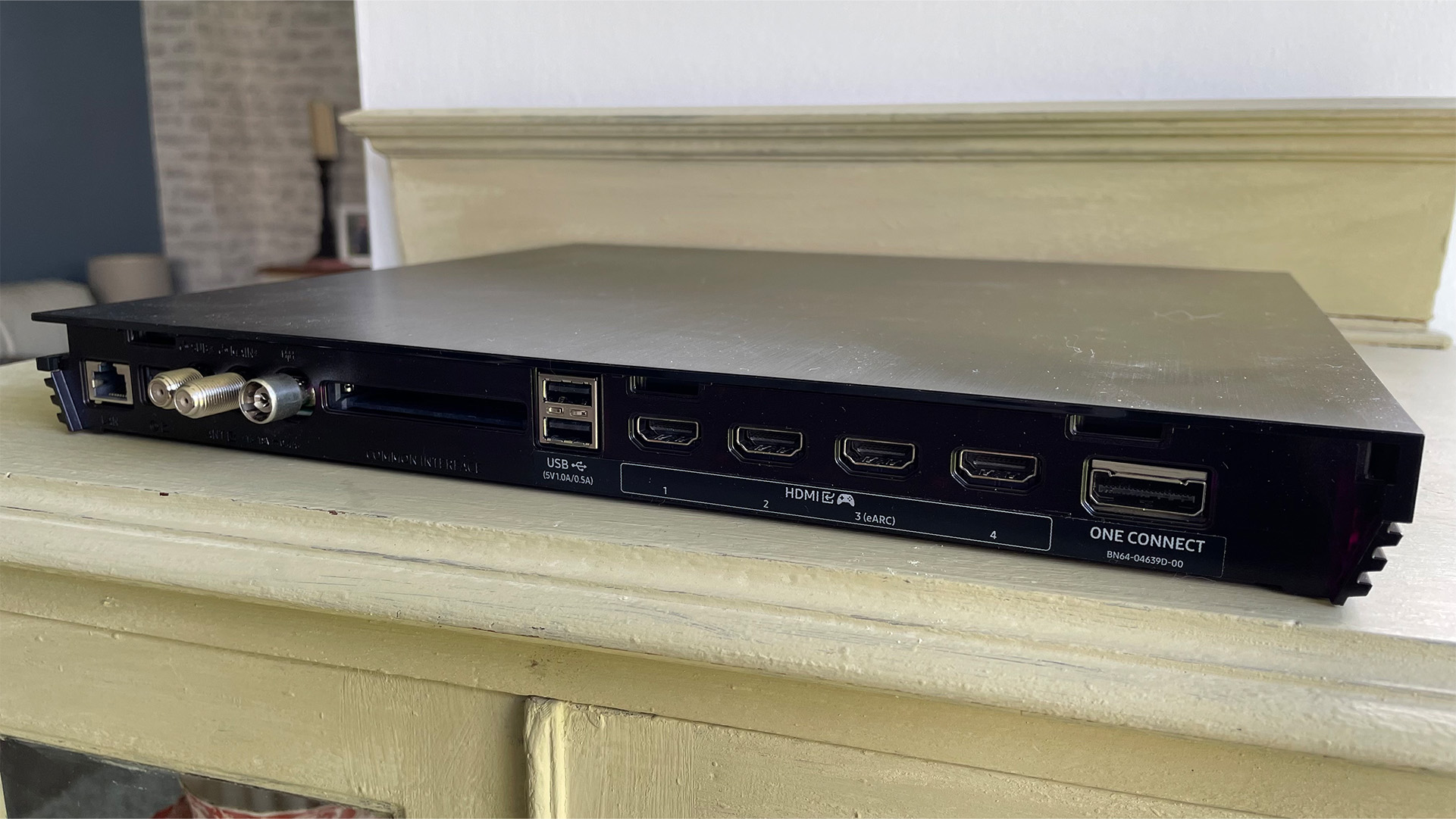
The QN900D’s 8K resolution puts it into a currently pretty niche (and shrinking) corner of the TV world. A niche the QN900D is hardly likely to break out of given its hefty price. It’s fair to say, though, that its 7680x4320 pixel count and futuristic design are far from the only things it’s got going for it when it comes to trying to justify that price.
For instance, Samsung has found a way of hugely increasing the power efficiency of its 2024 premium 8K panel, enabling it to meet today’s stringent television energy consumption rules at the same time that it’s achieved a 20-30% boost in brightness with HDR content over 2023’s 75-inch QN900C.
Brightness is not in itself a guarantee of great picture quality though, of course. This is why it’s a relief to find all that available brightness powered by what looks on paper to be seriously advanced light controls.
For starters, the lighting system uses Mini LEDs rather than regular ‘big’ ones. This means far more separate lights (Mini LEDs are only around a fortieth the size of regular LEDs) are fitted into the 75QN900D’s 75-inch screen, immediately raising the potential for more precise light control. In the 75QN900D’s case, too, all those LEDs are controlled by a bumper 1920 local dimming zones.
The brain behind this local dimming system is the new Neo Quantum 8K AI Gen 3 processor. This doubles the NPU speed of its 2023 predecessor and apparently features the accumulated knowledge of 512 (yes, 512) neural networks that have been tirelessly analysing different types of imagery to make it easier for the TV to know how to optimise its picture performance on the fly. That’s an eight-fold increase over the number of neural networks used to inform last year’s QN900C 8K ‘brain’.
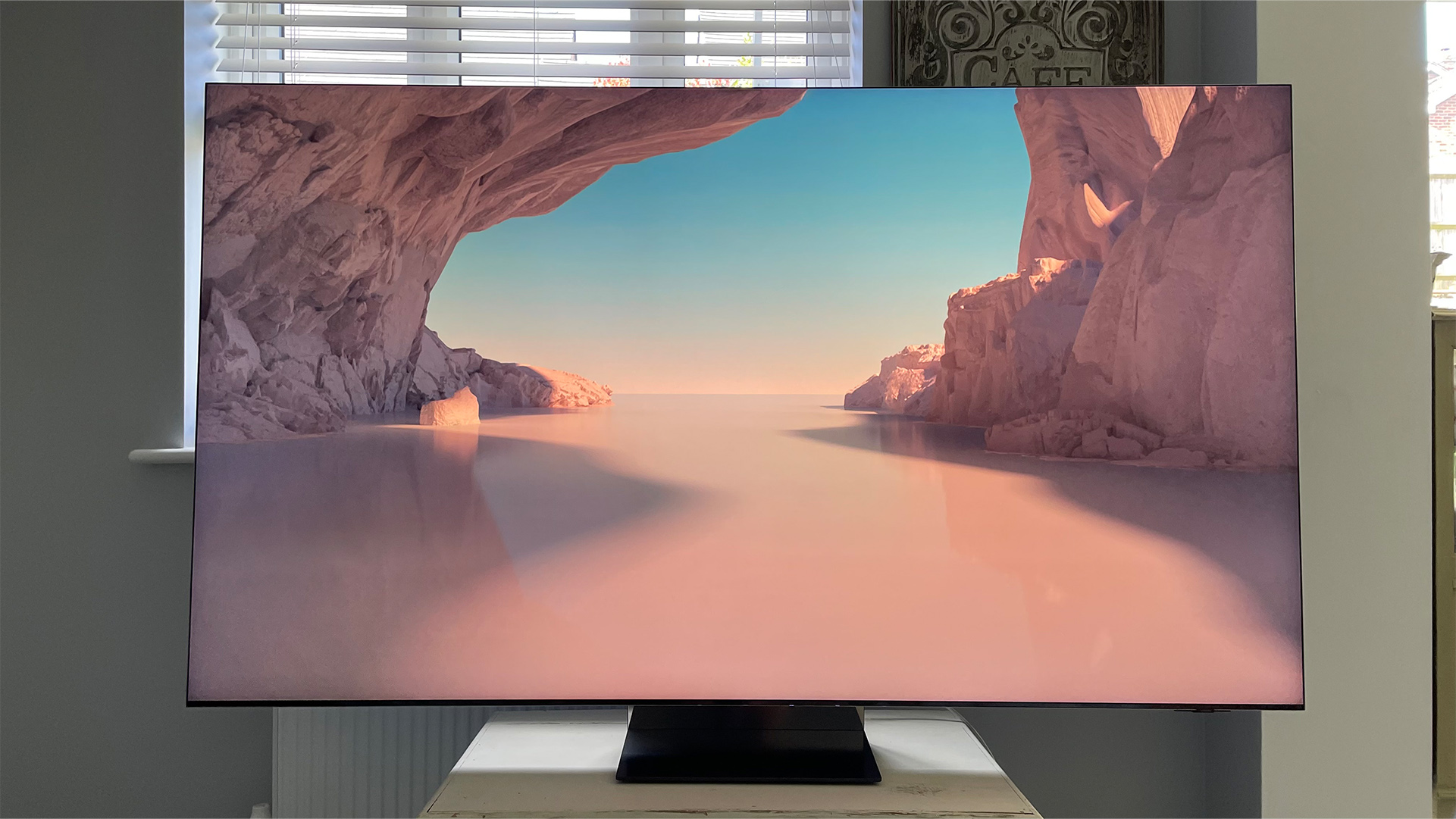
Screen size 75 inches (also available in 65in, 85in)
Type QLED
Backlight Mini LED
Resolution 8K
HDR formats HLG, HDR10, HDR10+
Operating system Tizen
HDMI inputs x 4 (4 x 48Gbps HDMI 2.1)
Gaming features 4K/120Hz, VRR, ALLM
Input lag 11ms (60Hz)
ARC/eARC eARC
Optical output? Yes
Dimensions (hwd, without stand) 94 x 165 x 1.3cm
While also heavily involved in the new energy efficiency mentioned earlier, the star turn of this new processor is a radically more powerful, AI-informed 8K upscaler. As we’ll see, this does an unprecedented job of turning 4K and even HD sources into 8K – handy given the ongoing shortage of native 8K content.
There’s a new motion prediction system, too, that prevents small, fast-moving objects such as tennis or cricket balls from glitching in and out of the picture as they typically would.
Samsung has also reintroduced an option for converting SDR to HDR for 2024, while a Real Depth Enhancer Pro system works out the focal point of any image frame and then subtly tweaks image elements to make foreground images look more pronounced and enhance the sense of depth. The idea is to make pictures look more like the way your eyes perceive the real world.
The QN900D isn’t only about taking movies and TV shows to another performance level; it’s also got plenty going on for gamers. All four of its HDMIs are equipped to handle the latest cutting-edge features of 4K/120Hz, 144Hz refresh rates if your PC supports them, VRR (including AMD Freesync Premium Pro) and ALLM switching. Plus, of course, 8K games at up to 60Hz refresh rates should you be lucky enough to have a PC rig capable of rendering so many pixels.
There’s also support for HDR10+ gaming, and a dedicated Game Bar menu screen available when gaming that provides information on your gaming signal as well as a helpful series of gaming aids. A page of its onscreen menu system is dedicated to all your gaming sources, too, from the various game streaming services available these days to any consoles or PCs you may have attached to the HDMI ports.
The QN900D’s smart features and menus are provided by the latest version of Samsung’s Tizen system. At first glance, the 2024 version looks the same as last year’s, with its mixed bag of attractive graphics but rather convoluted and sometimes unintuitive menu structure. Look a bit closer, though, and a welcome straightforward row of links to all your downloaded apps now appears below the advertising field at the top of the home screen, while superimposed over the ‘ads’ area are three new content-finding tabs: For You, Live and Apps. ‘For You’ is the clever one here, as it brings together ‘keep watching’ access to your most recently watched shows from broadcast or streamed sources, as well as recommending content from across your source list based on your viewing habits.
Bixby and Amazon Alexa voice control systems are supported, and there’s also support for multiple user profiles, so different members of your household can set up their own customised home pages and have those pages recommend content specific to that person’s individual viewing habits.
The QN900D’s flagship toolset is rounded out by a sound system that promises a whopping 90W of total power from a multi-channel system including speakers ranged – as noted earlier – around its edges as well as the row of no less than eight mid/bass drivers ranged across the bottom of the TV’s rear.
Picture
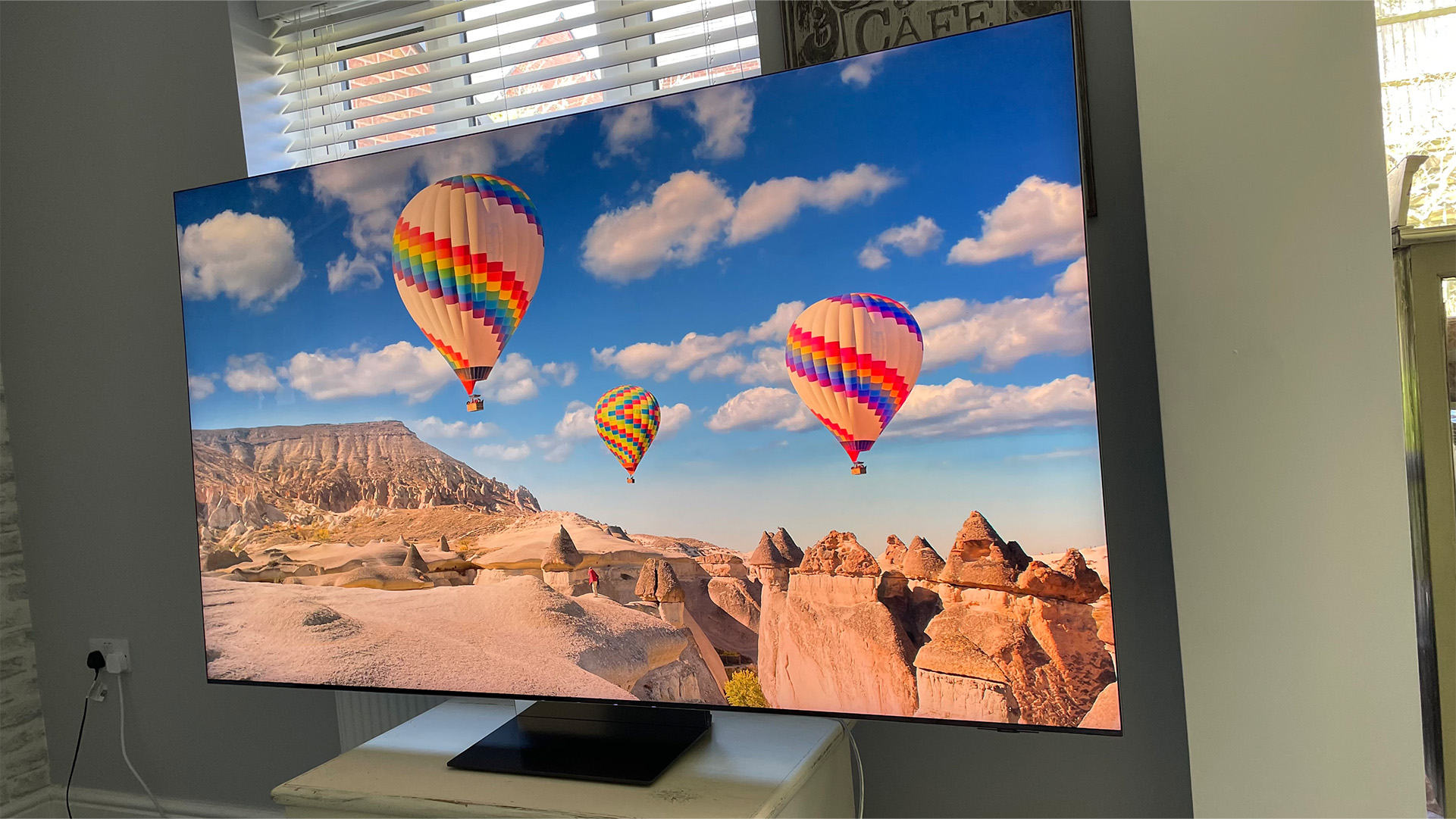
While Samsung might not be able to control whether or not the creative industries finally start making lots of 8K content, with the QN900D it certainly makes a seriously compelling case for 8K hardware.
In fact, thanks to the remarkable efforts of its latest 8K upscaler, the QN900D crucially makes a compelling case for 8K TVs even in the unlikely event that 8K content never becomes a thing.
We have seen good 8K upscalers before, from Sony, LG and, of course, Samsung. But thanks, presumably, to the massive contribution of AI, the precision with which the QN900D adds the tens of millions of extra pixels required to turn 4K and HD into 8K feels almost mystically impressive.
This is especially true in highly textured areas such as hair, grass, trees, the fabric of clothing, face details and so on. It’s not just that this sort of image content looks sharper, either. It also looks denser and more three-dimensional – more organic and natural, even. All with little or no hint of processing unpleasantness or artificiality to disrupt the extra connection with the picture that such image density creates. Provided, anyway, you make a couple of small tweaks to the Standard and Movie picture presets that we will get to later.
As well as being one heck of a satisfying party trick in its own right that delivers the most detailed, sharp-looking pictures we’ve seen on a TV, this unprecedented level of 8K upscaling performance also makes a clear-cut case for 8K being not only a worthy part of the AV landscape despite the lack of 8K content, but a feature genuinely capable of delivering a ‘next-gen’ experience.
This isn’t just true with video sources, either. Good 4K-level gaming graphics also look dazzlingly great after passing through the QN900D’s brainbox, enjoying new levels of sharpness, detail and depth that breathe new life into old favourites. The way Samsung’s set does this without making the resulting pictures look noisy or full of processing side effects genuinely makes you feel more immersed in what you’re playing.
The QN900D manages to achieve this upscaling feat, too, while only taking 11ms when using its fastest game mode setting to render graphics received at its inputs. We can’t even start to imagine the level of processing power required to calculate the look of so many pixels in so little time.
Spectacular though the QN900D’s upscaling of 4K content is, it remains true that native 8K sources are on a different level of beauty again. Our resident Spears & Munsil 8K test reel of American vistas and wildlife painstakingly rendered in 8K HDR looks exquisite, essentially making the whole concept of pixels and resolution melt away as if you’ve had some kind of ‘fuzzy filter’ removed from your eyes. It’s just you and the great American outdoors. Of course, the fact that we have to rely on demo footage in order to view native 8K content on the QN900D is itself an issue that doesn’t seem close to changing.
Of course, just sporting enough physical pixels does not guarantee that a TV will really deliver the impact of 8K resolution. Other picture factor ducks need to be in a row too – but here again, the QN900D is in seriously superior territory.
Contrast, for instance, is in most ways remarkable for an LCD TV, with the Mini LED backlighting and advanced local dimming controls managing to produce startlingly dark, almost OLED-like black colours at one end of the light spectrum, and phenomenally punchy OLED-beating brightness at the other.
The fact that it can also control its light down to impressively localised levels for an LCD TV helps to inject even more definition into the minutiae that makes 8K special.
The QN900D’s colour performance is advanced enough, too, to keep pace with the screen’s brightness and resolution. The Quantum Dots used to deliver its colours can be driven hard (bright) without losing saturation, resulting in outstanding colour volume. But at the same time, the screen can keep delivering subtle shading differences and details way beyond the point where most TVs will have succumbed to flaring, flatness or cartoonishness.
The QN900D's consistent vibrancy joins superior brightness and the ground-breaking upscaling system in showing its QN900C predecessor a clean pair of heels. The extra brightness is particularly important, since as well as getting more impact from HDR’s massively expanded light range, it also ensures that the QN900D’s Mini LED screen technology retains a clear raison d’etre despite the recent brightness increases that the new MLA and QD-OLED technologies have brought to the rival OLED TV world.
Despite their many stunning strengths, the QN900D’s pictures aren’t completely flawless. Our main complaint is that while the Standard picture preset gives you the most dramatic image in terms of 8K sharpness, contrast and colour punch, its backlight settings can also cause some distracting inconsistencies. For instance, when a very bright HDR object appears against a dark backdrop, the screen dims the intensity of the bright object down quite substantially to limit the potential for backlight blooming to appear around the bright object. Also, if there’s an abrupt cut in a scene from a light to a dark shot, or vice versa, you can sometimes see the screen produce a slightly delayed increase or decrease of its overall brightness level.
You can fix these inconsistencies by changing the local dimming settings to Low or High from the ‘Standard’ default, but this reduces black level performance or causes more blooming problems respectively.
The Standard mode’s default settings can also cause the usually outstanding 8K upscaler to become a little too aggressive at times – especially if there’s a really bright highlight at the heart of a tangle of finely detailed lines and textures. Softening the Sharpness setting greatly improves this one, though.
Fortunately the TV’s Movie preset also provides an excellent quick alternative for anyone who finds the Standard mode’s foibles too much. This is by far the best Movie mode we have seen on a Samsung TV, avoiding the slightly jaundiced tone of before while also retaining more brightness and contrast. This seems a logical and welcome change, given that most Samsung TVs now also carry a Filmmaker mode for people willing to sacrifice colour punch and brightness in return for more creative accuracy.
We recommend making sure the Movie mode’s sharpness is set to level 10, as without it the picture looks too soft to still feel ‘8K’. Otherwise, though, this mode really does offer an excellent out-of-the-box balance between a natural, immersive picture that still feels balanced and consistent but also gives you a bit more of the screen’s brightness and colour potential than the relatively dull (but accurate) Filmmaker Mode.
Sound
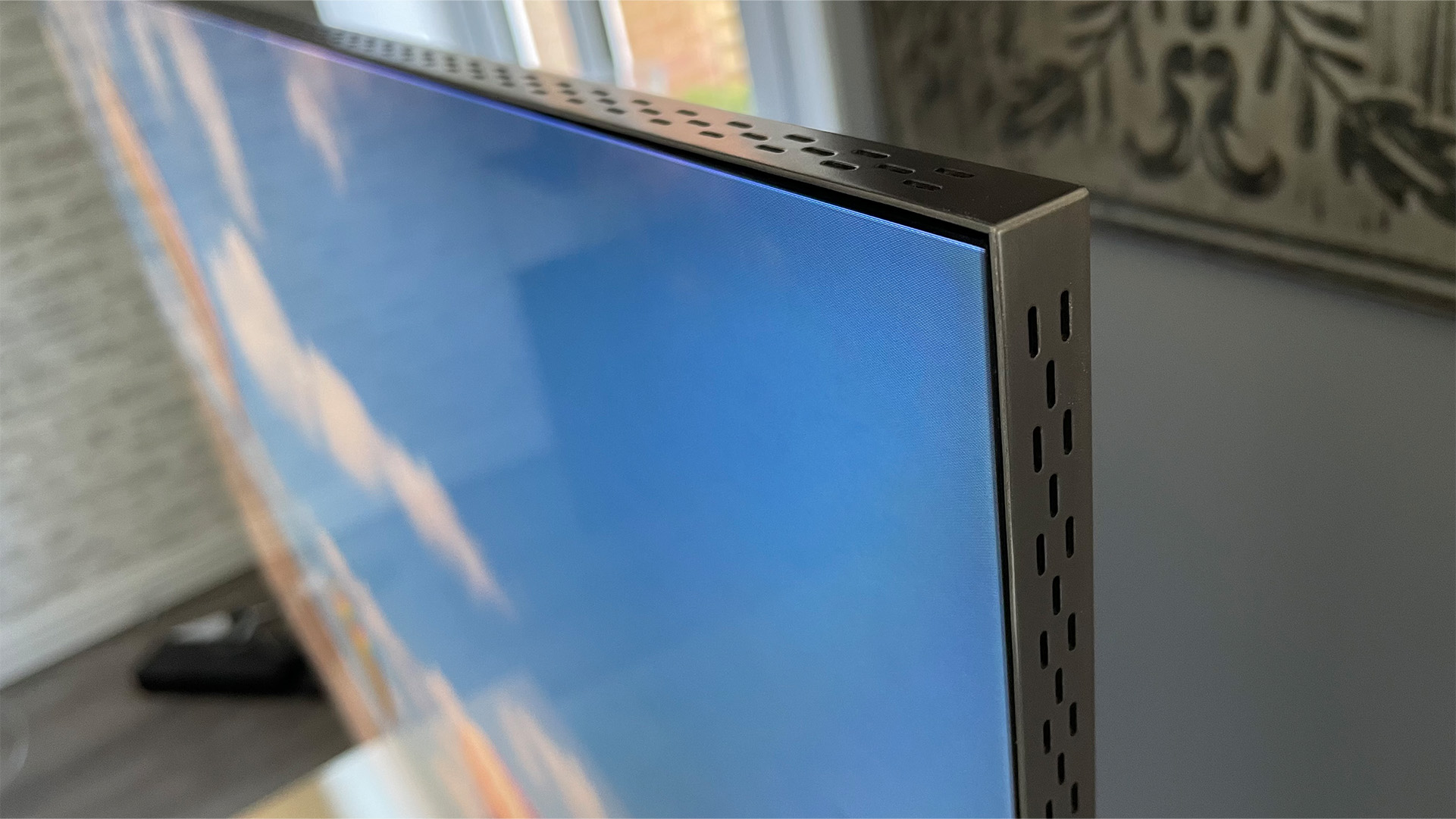
With its eight reasonably sizeable midrange drivers and other speakers arranged all around the screen’s edges, not to mention 90W of total power, the QN900D talks a good audio game. It doesn’t live up to its spec, though.
For starters, its sound lacks impact and forward projection, with most of the audio action sounding as if it’s coming from behind the screen. It can’t get very loud, either, by flagship TV standards, leaving action scenes sounding a bit tepid and uninvolving.
There isn’t much bass around, and when the TV does try to ‘dig deep’ its efforts are usually accompanied by some crackling and distortion. Distortion can also creep in with some sustained trebles.
Samsung’s Object Tracking Sound system deserves some love, though. Sound effects and voices really are positioned around the screen with excellent accuracy, giving you back at least some of the immersion lost by the sound’s lack of volume and forward projection. The speakers are sensitive enough to bring out high levels of detail, too, and the soundstage spreads quite far from the screen. There’s a mild height as well as width element to this spread, too.
Verdict
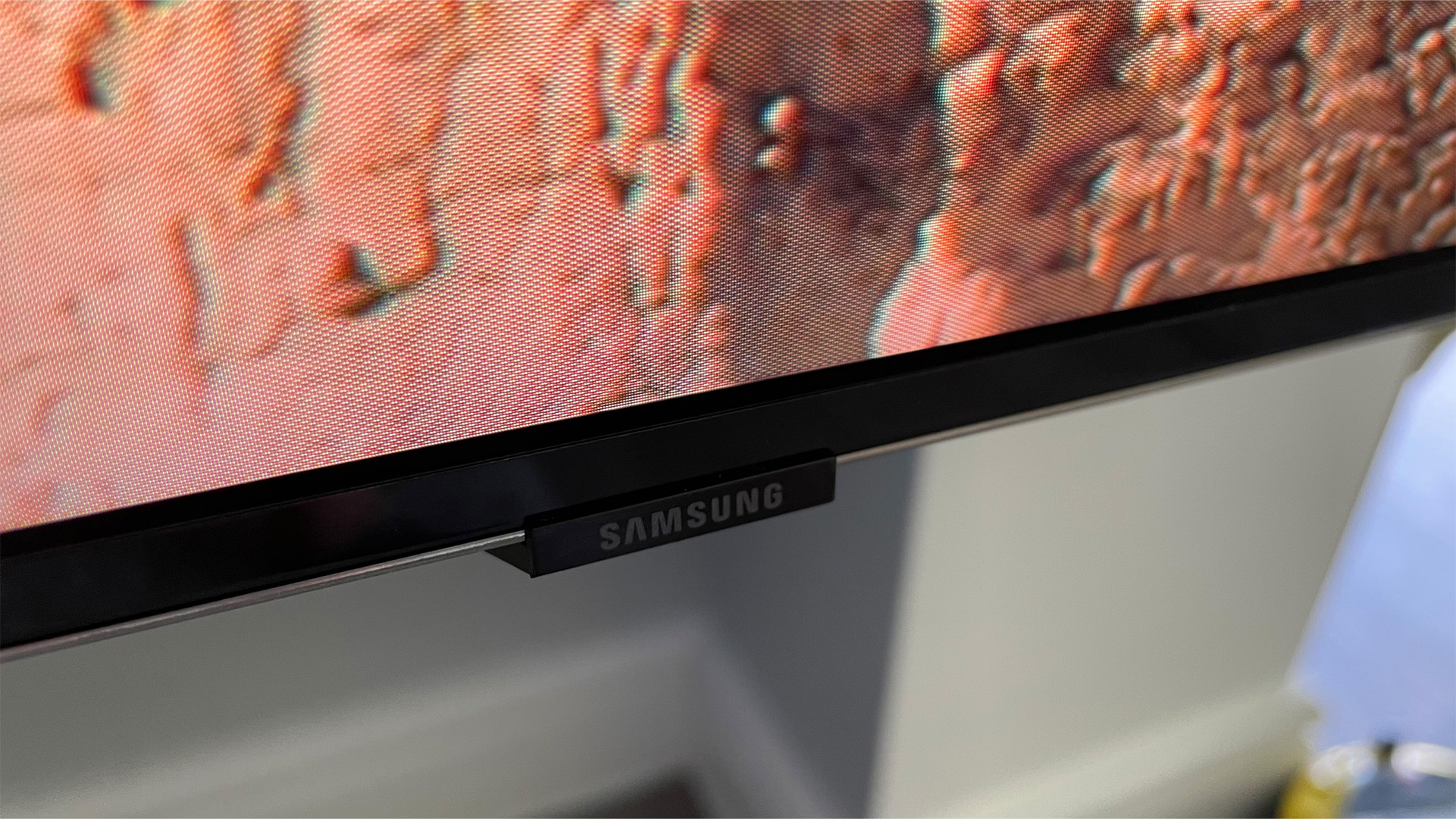
If you can afford it, the QN900D marks a spectacular debut for Samsung’s 2024 TV range. Its picture quality improves considerably in just about every way on its predecessor, crucially leaving clear blue brightness water between it and 2024’s top OLED TVs, and rewriting the upscaling rule book to remind us in no uncertain terms that 8K TVs don’t have to be fed 8K content to make a difference. Which is a good thing, really, seeing as no serious 8K content is available or even seemingly on the horizon.
SCORES
- Picture 5
- Sound 3
- Features 5
MORE:
Read our review of the LG OLED77Z3
Also consider the Samsung QE77S95C
Best 8K TVs: the ultimate big screen 8K resolution televisions







